Newrath House
Houses within 10km of this house
Displaying 89 houses.
Houses within 10km of Newrath House
Displaying 89 houses.
| House name | Description | |
|---|---|---|
| Abbey House | James Veale was leasing this property from the Congreve estate in 1849 when it was valued at £10. A house is still extant at the site. |
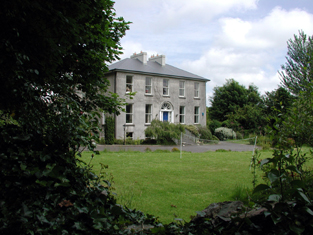
|
| Abbey Farm | A house built after the publication of the 1st edition Ordnance survey map, it was being leased by Henry Bannon from John Congreve's estate in 1849 when it was valued at £10. A house is still extant at the site. | |
| Ballyrobin | Leased by William Hanbury from Josiah Pope at the time of Griffith's Valuation, when it was valued at £12.Original buildings do not seem to be extant at the site which is now situated in county Kilkenny. | |
| Riverview (Kilculiheen) | Joshua Williams was leasing Riverview from Richard C. Pope in 1849 when the house was valued at £37 10s. There is still an extant house at the site. | |
| Sionhill House | Rev. Alexander Alcock was leasing this property from the Pope estate at the time of Griffith's Valuation when it was valued at £46 10s. It is still extant and famous for its gardens which are open to the public at certain times as well as offering guest accommodation. |
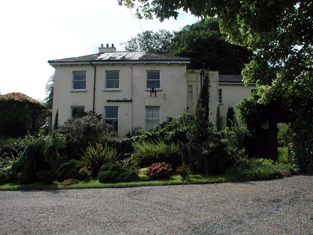
|
| Belmount House (Kilculiheen) | Held in fee by Sir Henry Barron at the time of Griffith's Valuation, when it was valued at £100. Labelled as Belmount House on the first edition Ordnance Survey map but as St. Patrick's Institution on the later 25-inch edition. Institutional buildings still exist at the site. | |
| Graigue Lodge | Leased by John Grace from the Barron estate at the time of Griffith's Valuation. It is described as a "steward's house" and valued at £17 10s. It is named Graigue Lodge on the 1st edition Ordnance Survey Map and as Belmount Cottage on the 25-inch edition of the 1890s. The site is now occupied by a modern housing estate. | |
| Newpark House (Waterford) | In 1849 the representatives of Sir John Newport were leasing Newpark House to William Fitzgerald, when it was valued at £75. The estate sale notice of 1856 includes a lithograph of the house which is described as "large, commodious and in excellent order". In 1885 Walford mentions Newpark as the seat of Fitzmaurice G Bloomfield while in 1894 Slater refers to it as a residence of Herbert Godfrey Bloomfield. Wilson, writing in 1786, refers to New Park, as the seat of Simon Newport. This house is no longer extant. | |
| Newtown House (Waterford) | At the time of Griffith's Valuation, Eaton Edwards was leasing this property to James Aylward, when it was valued at £28 10s. The site now appears to be occupied by a building known as Farmlea. | |
| Christendom House | At the time of Griffith's Valuation, Benjamin Whitney was leasing this property from the Rea estate when it was valued at £32 10s. This house is no longer extant. | |
| Rockland House | Rockland House, now the Athenaeum Hotel, was leased by the Ray family to William Snow at the time of Griffith's Valuation. It was valued at over £52. The hotel history indicates it was built in the early nineteenth century by the White family who had major shipbuilding interests in Waterford at that time. See www.athenaeumhousehotel.com for more information. | |
| Mountain View (Waterford) | Held in fee by Josiah Pope at the time of Griffith's Valuation when it was valued at £37 10s. His address is given as Rockshire, Waterford, in the 1870s. A hoiuse is still extant at this site. | |
| Rockshire House | Leased by Samuel Grubb from Richard C. Pope at the time of Griffith's Valuation, when it was valued at £62 10s. In 1837 Lewis refers to Rockshire as the seat of the Hon. Mrs. Greene. The building is still extant and occupied as apartment accommodation. |
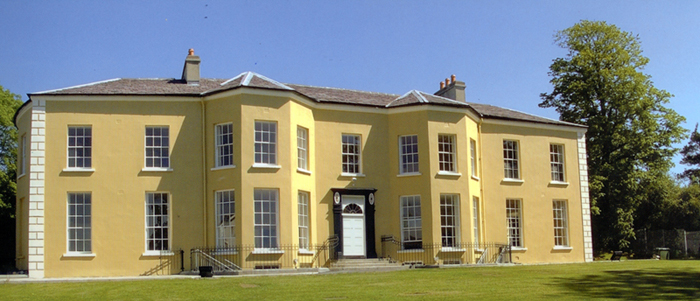
|
| Rockingham House (Waterford) | At the time of Griffith's Valuation Richard W. Morris was leasing this property from Mrs. Elizabeth Hassard, when it was valued at £65. The building at this site now is named Rockenham Court. | |
| Butlerstown House (Middlethird) | Edward T. Power was leasing this house from Richard Duckett at the time of Griffith's Valuation when it was valued at £11 15s. This house is longer extant. | |
| Butlerstown Castle | The Sherlock family had been in possession of Butlerstown Castle and estate since the 1560s. Wilson, writing in 1786, refers to Butlerstown as the seat of Thomas Sherlock. In the 1790s a disastrous fire saw much of the property destroyed and subsequently the family moved to county Kilkenny although they continued to hold estates in the area. At the time of Griffith's Valuation, it was the property of Robert Backas, three generations of whose family lived at Butlerstown, before departing at the end of the 1850s. Between then and the 1880s Butlerstown was occupied by Samuel Ferguson. In 1894 Slater refers to the property as the seat of Thomas Prendergast. Only the ruin of the castle survives but the Coachhouse is in use as Guest Accomodation. | |
| Carrickphierish A | Paul Heney was leasing this property from Waterford Corporation at the time of Griffith's Valuation when it was valued at £15 10s. | |
| Knock House (Waterford) | Andrew Ryan was leasing this property from Waterford Corporation in 1850 when it was valued at £18. | |
| Lismore House (Waterford) | Leased by Francis O'Grady from Waterford Corporation in 1850 when it was valued at £13. | |
| Carriganore House | John Strangeman was leasing this property from the Corporation of Waterford in 1850 when it was valued at £22. It now forms part of the Western Campus of Waterford Institute of Technology. |
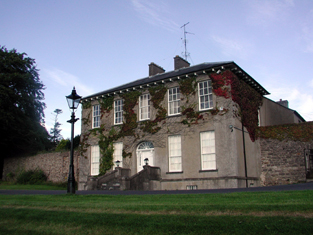
|
| Killoteran House | William Scully was leasing this property from Edward Roberts in 1850 when it was valued at £34. It is still extant and occupied. |
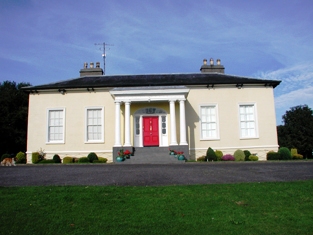
|
| Gracedieu House | James Kearney was leasing this property from James Anderson in 1850 when it was valued at £22. In 178 Wilson refers to Grace Dieu as the seat of Mr. Morris. It is named as Gracedieu House on the 25-inch Ordnance Survey map of the 1890s but is no longer extant. | |
| Wood House (Woodville) | Thomas McGrath was leasing a house and mill from William Christmas at the time of Griffith's Valuation when the two properties had a valuation of £23. This house is labelled Woodvilla on the 1st edition Ordnance Survey Map but Wood House on the later 25-inch edition. A house is still extant at the site. The mill buildings are described as "in ruins" on the 1st edition Ordnance Survey map. | |
| Cullenagh (KIlmeadan) | Mrs. Margaret Gamble was leasing this property from Viscount Doneraile's estate in 1850 when it was valued at £11 15s. A house is still extant at the site. |

|
| Fairbrook House | At the time of Griffith's Valuation, Patrick Stephenson was leasing an extensive mill complex from Thomas Gamble at this location. It is described as Fairvew Paper Mill on the 1st edition Ordnance Survey Map and as Fairbrook Factory on the later 25-inch edition. The house and mill had a combined value of £95. The buildings are still extant. |
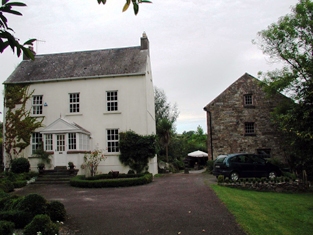
|
| The Pines (Darrigal) | Alexander Sherlock was leasing this property to Michael Nowlan in 1850 when it was valued at £13 10s. It appears to have become known as The PInes by the end of the nineteenth century. Recorded as the seat of Patrick Power by Leet in 1814. There is still a house at this site. | |
| Whitfield Court | In 1850 William Christmas held Whitfield in fee when it was valued at £49. The National Inventory of Architectural Heritage indicates the house was built by him between 1820-1849, replacing an earlier house. Local sources indicate that this earlier house was in the townland of Whitfield and the name was transferred to the existing house when it was built in the adjacent townland of Dooneen. Leet records the earlier property as the seat of Thomas Christmas in 1814. Smith, writing in 1774, mentions the house as "an elegent seat belonging to Thomas Christmas, formerly a Dobbyn castle". In 1786 Wilson refers to Whitfield as the seat of William Christmas. The nineteenth century house is still extant but no longer occupied. |
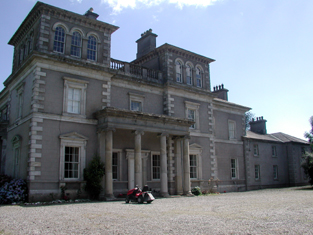
|
| Pouldrew House | In 1850 Edward Eakers was leasing this property from the Malcolmson estate. The property included part of an extensive mill complex, valued at over £36. It is still extant and occupied. |
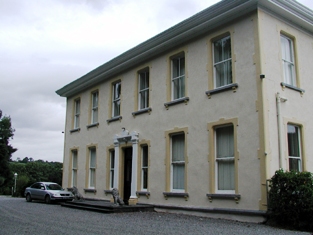
|
| Pouldrew Mill | This property is closely connected with Pouldrew House nearby. In 1850 it was leased by Edward Eakers from the Malcolmson estate and valued at £95. The mill was demolished in the twentieth century. | |
| Pembrokestown House | The house at Pembrokestown probably came into the Esmonde family through the marriage, in the eighteenth century, of Sir James Esmonde, seventh baronet, to Ellice White, daughter of Thomas White, of Pembrokestown. In 1814 Leet refers to it as the seat of William Power. At the time of Griffith's Valuation, in 1850, it was held in fee by Mrs. Anne Esmonde, and valued at £21. In 1894 Slater refers to it as the seat of Patrick W. Power. A house is still extant at Pembrokestown. It was offered for sale in 2025. |
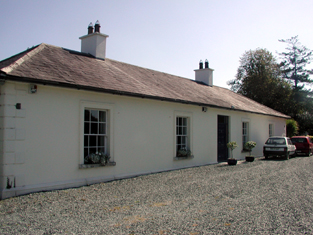
|
| Mount Congreve | Built and owned by the Congreve family from the mid-eighteenth century. Wilson states that it was "the pleasant seat of John Congreve" in 1786. Leet refers to it as the seat of Captain Fleming in 1814. At the time of Griffith's Valuation, in 1850, Mount Congreve was held in fee by John Congreve, when it was valued at £68 10s. It is still extant though a sale of the house contents took place on the premises in July 2012. |
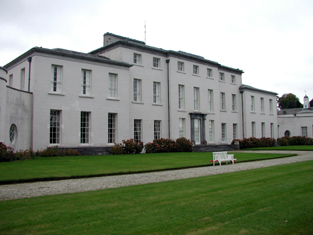
|
| Rock View /Airmount House | Thomas Pope was leasing this property to Rev. Martin Flynn in 1850 when it was valued at £31. It is labelled Rock View on the 1st edition Ordnance Survey Map but as Airmount House on the later 25-inch edition. Later the property of the Mahony and MacDonald families. |

|
| Summerland | Leased by the Corporation of Waterford to Samuel Strangeman in 1850 when it was valued at almost £40. A building is still extant at the site. | |
| Rathfadden Cottage | In1850 this property was leased by Joshua W. Strangeman from the Corporation of Waterford. | |
| Prospect Lodge (Waterford) | Henry Bolton was leasing this property to Michael Ardagh at the time of Griffith's Valuation when it was valued at £22. It is still extant though perhaps not currently in use. |
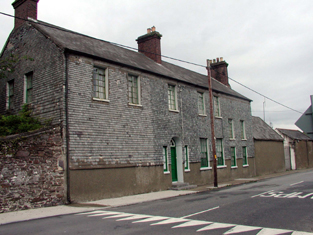
|
| Manor of St. John (Roanmore) | Thomas Wyse is recorded as the lessor of this property in 1850 when it was vacant and valued at almost £32. . In 1814 Leet also noted it as the seat of Thomas Wyse. The house at the site is labelled Roanmore on the 1st edition Ordnance Survey map. A much larger property, labelled St. John's Manor, appears on the 25-inch edition of the 1890s. This house was constructed in the nineteenth century to replace an ancient manor at the site, also belonging to the Wyse family. The building is still extant and now the focus of a Youth Services Project. |
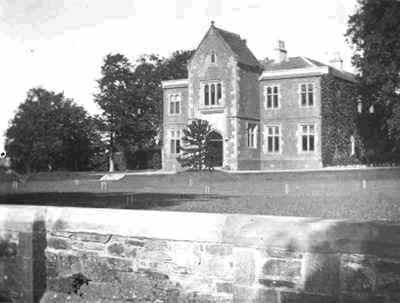
|
| Carrickphierish or Fairview | At the time of Griffith's Valuation, in 1850, this house was occupied by Owen Carroll leasing from Lawrence Roarke. The property was valued at £16. In 1881 the sale of Power property in the Land Judges Court includes a house at this location, described as "fit for the immediate reception of a gentleman's family". No longer extant. | |
| Ballyduff House (Kilmeadan) | In October 1851, the sale notice for Henry Langley's property at Kilmeadan noted that the demesne at Ballyduff was well planted and the house at a little cost could be put into excellent order. The tenant at the time was John Sadlier, MP. At the time of Griffith's Valuation it had been occupied by John William Langley leasing from Henry Langley and was valued at £9. There is still an occupied house at Ballyduff. | |
| Stonehouse | In 1814 Leet records Stonehouse as the residence of Patrick Duckett. This may be the same property leased by Joseph Power from Osborne Boyce at the time of Grifith's Valuation and valued at £9. The original property does not appear to be extant. | |
| The Mount | Nicholas Mahon Power held this unocupied property at the time of Griffith's Valuation when it was described as a "herd's house" and valued at £10 12s. A ruined folly still exists adjacent to the site. | |
| Ballygunner Castle | In 1848, John Phelan was leasing this property from John P. Fitzgerald, when it was valued at £16 8s. The National Inventory of Architerctural Heritage cites it as a building of national importance due to its combination of a medieval castle site with a seventeenth century house. The building is still extant. |
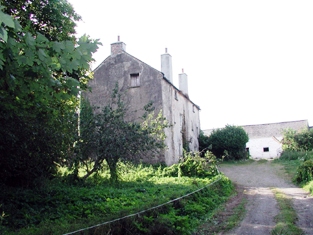
|
| Mount Druid (Gaultiere) | William Roberts was leasing this property from the Marquis of Waterford's estate in 1848, when it was valued at £14. In 1837 Lewis noted it as the seat of Mr. Reynett. There is still an extant house at the site. | |
| Blenheim Lodge | Leased by Roger Sweetman from Lord Waterford's estate at the time of Griffith's Valuation, when it was valued at £35.Lewis refers to it as the seat of Pierce Sweetman in 1837. It is still extant and operated as a guesthouse known as Blenheim House. |

|
| Blenheim (Gaultiere) | Miss Eliza Ridgeway was leasing this property from the Beresford estate in 1848, when it was valued at £29 18s. It is still extant and occupied. |
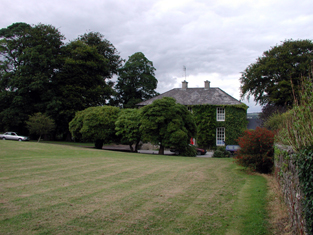
|
| Blenheim House | At the time of Griffith's Valuation, Robert Carroll was leasing this property from Eliza Ridgeway when it was valued at £20. It is still extant and occupied. It is named as Blenheim House on both the 6-inch and 25-inch Ordnance Survey maps though it now seems to be known as Blenheim Lodge. |
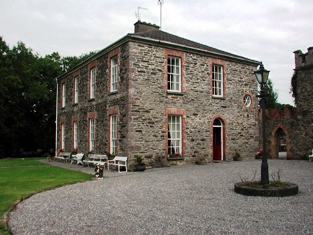
|
| Newport Corn Mill | Thomas and William Manning were leasing a house and extensive mill property from Simon Newport at the time of Griffith's Valuation. The complex was valued at £31. On the later 25-inch Ordnance Survey map it is labelled Brook Lodge Mill. It is no longer extant. | |
| Belmont House (Ballynakill) | Sir Samuel Roberts was leasing this property from Nicholas M. Power in 1848 when it was valued at £37 6s. In 1837, Lewis noted the property as the seat of J. Roberts. | |
| Rockview (Ballygunner) | In 1848, James Shannon was leasing this property from the Roberts estate when it was valued at £15 3s. The original house does not appear to be extant. | |
| May Park | George Meara was leasing this property from the Power estate at the time of Griffith's Valuation, when it was valued at £78. Lewis also notes it as his seat in 1837. | |
| Glenville | In 1848 John Greene was leasing this property from the Power estate when it was valued at £46. | |
| Ballynakill A | At the time of Griffith's Valuation, Martin Rockett was leasing this property from the Power estate when it was valued at £15 10s. | |
| Ballynakill House (Gaultiere) | Leased by Robinson Thomas from the Power estate in 1848, when it was valued at £42. In 1837 Lewis noted it as belonging to the Power family but "now occupied by a tenant". Leet records it as the residence of P. Power in 1814. Writing in 1774, Smith describes Ballynakill as "the agreeable seat of William Dobbyn". Brady notes that it incorporates the fabric of a medieval tower house. Ballynakill House is still extant and occupied. |
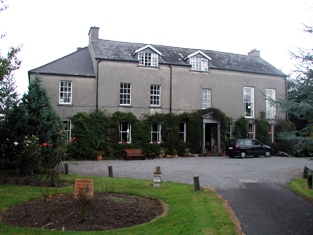
|
| Prospect House (Gaultiere) | In 1848 James Merritt was leasing this property from the Grant estate when it was valued at £21. The house is still extant and occupied. |
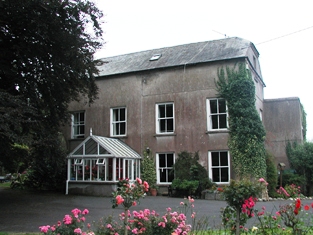
|
| View Mount | A property named as View Mount on the 25-inch Ordnance Survey Map of the 1890s. It was occupied by Sarah Reynett, leasing from the Grant estate, at the time of Griffith's Valuation, when it was valued at £32. Mrs. Sarah Reynett, with an address at Kingstown, Dublin, owned 89 acres in county Waterford in the 1870s. A house is still extant at the site. | |
| Mount Pleasant (Gaultiere) | Samuel King was leasing this property from the Grant estate in 1848 when it was valued at £74. Lewis had also noted it as his seat in 1837. Samuel King, residing at Mountpleasant, owned over 70 acres in county Waterford in the 1870s. This house is no longer extant. The site is now occupied by modern housing. | |
| Little Island Castle | At the time of Griffith's Valuation, this property was held in fee by John P. Fitzgerald, when it was valued at £25 10s. In 1837 Lewis had referred to the property as "the castle on the island owned by J. Fitzgerald". In 1906 it was the property of Gerald P. Fitzgerald and valued at £48 15s. The property remained in the Fitzgerald family until the mid twentieth century. It was turned into a luxury hotel in the 1990s. See www.waterfordcastle.com Fitzgerald was also the lessor of three other houses on the island, which were leased to members of the Grace and Power families. |
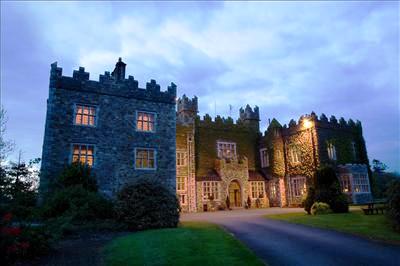
|
| Williamstown House | David O'Neill Power was the lessor of several properties in the townland of Williamstown in 1848. This property, though valued at only £4 10s, appears as Williamstown House on the 6-inch Ordnance Survey map. However, it has disappeared by the publication of the 25-inch Ordnance Survey map of the 1890s. In 1848 it was leased to John W.Pons. Writing in 1774, Smith mentions Williamstown House as the seat of Mr. Fitzgerald. | |
| Williamstown Power | At the time of Griffith's Valuation, Edmund Power (senior) was leasing a property valued at £10 15s from the O'Neill Power estate. At the same time Edmund Power (junior) was leasing a property valued at 11 14s. | |
| Grantstown House/Blue Coat School | At the time of Griffith's Valuation Rev. Robert Daly held this property in fee. It was described as "Blue School" and was valued at £80. On the 25-inch Ordnance Survey map of the 1890s it is labelled Grantstown House and the earlier house of this name has disappeared. | |
| Grantstown House I | This property, labelled Grantstown House on the 6-inch Ordnance Survey map of the 1840s, is not visible on the later 25-inch map. In 1848 it was being leased from Rev. Robert Daly by Sarah Reynett and was valued at £25. Lewis refers to it as the seat of Rev. Francis Reynett in 1837. Substantial urban development has since taken place in this area. | |
| Daisybank House | In 1848, Patrick Tracy was leasing this property from the Power estate when it was valued at over £18. The National Inventory of Architectural Heritage suggests it was built in the later eighteenth century and served as a hotel during its long history. |
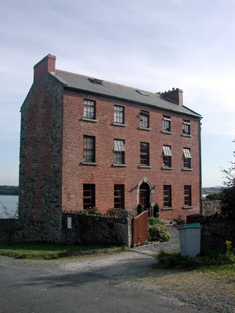
|
| Mighnawn Cottage | Labelled as Mighnawn Cottage on the 25-inch Ordnance Survey Map of the 1890s, this property was leased by Miss Mary Owens from the Power estate at the time of Griffith's Valuation. It was valued at £20 8s. | |
| Coolbunnia | In 1848, Margaret Cheasty was leasing this property from thel Power estate when it was valued at £10. The house is adjacent to the the site of Faithlegg Castle, the original stronghold of the Aylward family in the area. | |
| Faithlegg House | At the time of Griffith's Valuation, Faithlegg House was owned by Nicholas O'Neill Power and valued at £100. The lands in this area were originally held by the Aylward family after the Norman Conquest but they were dispossessed by Cromwellian forces in the 1650s. Faithlegg was then acquired by the Bolton family who eventually built the house in the eighteenth century. It was sold by them to the Power family in 1819. It was enlarged and extended under Power ownership and in 1906 was valued at £110. Faithlegg remained in the Power family until 1935 when it was sold to the De La Salle order who used it as a novitiate until the 1980s. It is now Faithlegg House Hotel. See www.faithlegg.com. |
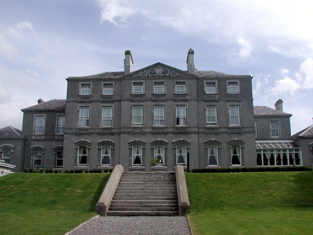
|
| Kilcullen | Edward Delahunty was leasing this property from Lord Waterford's estate in 1848 when it was valued at £10. An extensive farm still exists at the site. | |
| Ballinamona Park [House] | In 1848 Ballinamona was held in fee by Thomas Carew when it was valued at £51. In 1814 Leet notes it as the residence of Robert Carew. Lewis refers to it as the seat of T. Carew in 1837. Smith, writing in 1774, describes it as a "well-built house" while Wilson, writing twenty years later refers to it as " a beautiful seat with large demesnes". Brady notes that it was rebuilt following a fire in the late nineteenth century. By 1906 it was owned by Robert Thomas Carew (jun) and valued at £70. It is still extant. | |
| Grace Dieu | This house is labelled on the 25-inch Ordnance Survey map of the 1890s as Grace Dieu. In 1848 it was leased by James Anderson from the Carew estate and valued at almost £49. In 1786 Wilson refers to Upper Grace Dieu as the seat of Mr. Anderson. It is still extant and run as a retreat centre by a religious order. |
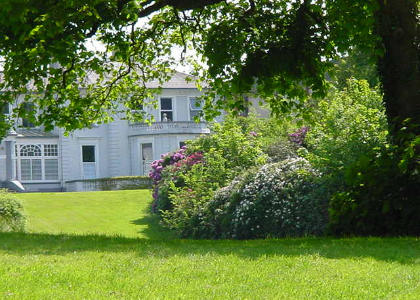
|
| Carriganard | Two members of the Hartry family, William and NIcholas, were leasing houses from the Lane-Fox estate at Carriganard in 1848. William occupied the house valued at £12 7s while Nicholas held a house valued at £10 [S579089]. The original buildings do not appear to be extant now. | |
| Kilbarry (Gaultiere) | John Hartry was leasing this property from the Lane-Fox estate at the time of Griffith's Valuation, when it was valued at £12 5s. The property is no longer extant and major modern development has taken place in the area. | |
| Ballyhoo | William Hurley was leasing this property from the Lane-Fox estate in 1848 when it was valued at almost £12. Modern buildings exist at the site now. | |
| Mount Beresford | In 1848 William Manning was leasing this property from Lord Waterford's estate when it was valued at almost £10. There is still an extant house at the site. Shaw Mason's "Parochial Survey" notes it as the seat of Mr. Maguire. A house is still extant at the site. | |
| Ballinkina | At the time of Griffith's Valuation, William Connolly, MD, was leasing this property from Lord Waterford's estate, when it was valued at over £15. Buildings are still extant at the site. | |
| Brooke Lodge | In 1848,Rev. Henry Bolton was leasing this property from Lord Waterford's estate when it was valued at over £29. The National Inventory of Architectural Heritage states that this house was built in the nineteenth century on the site of an earlier house owned by the Penrose family. It is still extant and occupied. |

|
| Couse Mill | Richard Power was leasing this property from David O'Neill Power at the time of Griffith's Valuation, when it was valued at £22 and included a mill. The mill is labelled on the 1st-edition Ordnance Survey Map but does not appear on the later 25-inch edition of the 1890s. | |
| Woodland House | At the time of Griffith's Valuation, Michael Dobbyn was leasing Woodland House from Elizabeth Bolton, when it was valued at £22. The house thus labelled on the 1st-edition Ordnance Survey map was located a short distance away at S661113 but seems to have been superceded by this house by 1848. The National Inventory of Architectural Heritage notes that this house was sometimes used as a Dower house for Faithlegg House. In 1945 the ITA survey indicates it was the residence of Hubert Gallway. |
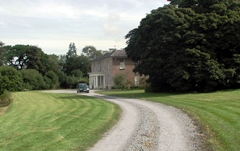
|
| Ballycanvan House | In 1848 George Kent was leasing this property from Eliza Bolton when it was valued at over £34. The demesne was included in the sale of Bolton property in June 1857. In 1814 Leet notes it as the seat of Samuel Roberts. The house was in ruins by the end of the twentieth century. | |
| Spring Hill (Gaultiere) | At the time of Griffith's Valuation, John Stephens was leasing this property from the Bolton estate when it was valued at £24 11s. Buildings, though perhaps not the original ones, are still extant at the site. | |
| Foxmount | In 1848, Matthew Fox was leasing this property to Edmund Flynn, when it was valued at £10. The Encumbered Estates Sale notice of 1856 indicates that the lands in this vicinity had previously been part of the Wilkinson estate. |
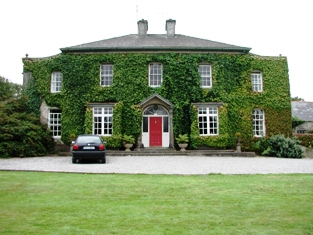
|
| Carriglea (Gaultiere) | Richard Phelan was leasing this property from Lord Waterford's estate at the time of Griffith's Valuation, when it was valued at £10 15s. It is no longer extant. | |
| Parkswood House | Mrs. Eliza McDougall was leasing this property to Edward Strangman in 1848 when it was valued at £33. There is still an extant house where guest accommodation is provided. | |
| Parkswood Cotham | In 1848 George Cotham was leasing this property from Mrs. Eliza McDougall, when it was valued at almost £14. | |
| Monamintra | Mrs. Johanna Lyons was leasing this property from Lord Fortescue's estate at the time of Griffith's Valuation, when it was valued at £10. An extensive farm occupies the site now. | |
| Ozierbank House | Mrs. Hannah Palmer was leasing this property from the Leper Hospital Trustees in 1848, when it was valued at £16 10s. It is labelled as Ozierbank House on the 25-inch Ordnance Survey map of the 1890s. The building is no longer extant. | |
| Ballytruckle (Waterford) | In 1848, Baron Lefroy is recorded as the lessor of a property at Ballytruckle, barony of Gaultiere, county Waterford. This is possibly Thomas Langlois Lefroy, of Carrigglas, county Longford, Baron of the Exchequer. He had married Mary Paul, of Silver Spring, county Wexford. The house at Ballytruckle was leased to Mrs. Ellen Alcock and valued at £13. The site is now occupied by modern buildings. | |
| Prospect House (Gaultiere) | Westerna Lewis was leasing this property from the representatives of M.Hayes at the time of Griffith's Valuation, when it was valued at £29 15s. A small building is shown on the 1st edition Ordnance Survey map but a more substantial one, labelled Prospect House, appears on the 25-inch map of the 1890s. A house is still extant at the site. | |
| Ballycar (Cove) | George Gibsen was leasing a property at Cove from John Purcell Fitzgerald in 1848 when it was valued at £15. This may be the house, built after the 1st Ordnance survey and labelled on the 25-inch map of the 1890s as Ballycar House. The property at the site is now used as offices. |
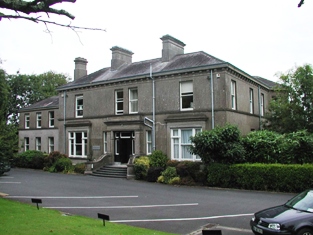
|
| Glenville Cottage (Gaultiere) | At the time of Griffith's Valuation, this property was occupied by Captain P.C. Lamphiere, leasing from the Fitzgerald estate. It was valued at £17 at the time. It is labelled Glenville Cottage on the 25-inch Ordnance Survey Map of the 1890s but as Cove Cottage on the 1940s edition. A house is still extant at the site. | |
| John's Hill House | Occupied by Captain Simon Newport at the time of Griffith's Valuation, when it was valued at £28. Newport was leasing it from his wife's uncle, Robert H. Paul. It is labelled Bishop's House on the 25-inch Ordnance Survey Map of the 1890s when it had become the residence of the Roman Catholic bishops of Waterford and Lismore. | |
| Amberhill House | Wilson, writing in 1786, refers to Amber Hill as the seat of Stephen Worthvale. By the time of Griffith's Valuation, this townland was part of the St. Leger estate and Amberhill was occupied by Stephen Gamble when the buildings were valued at over £8. A farm is still extant at the site. |

